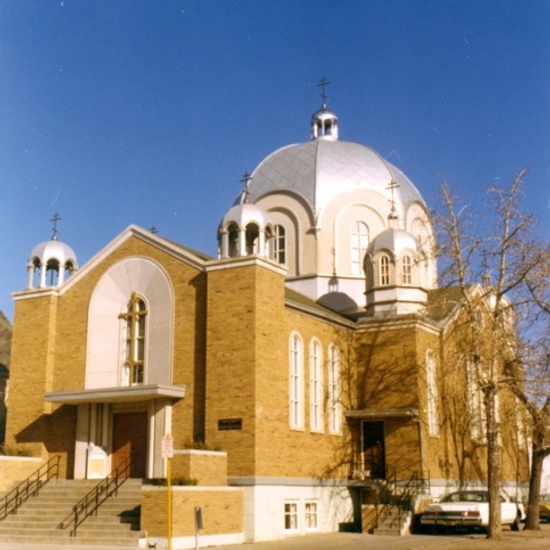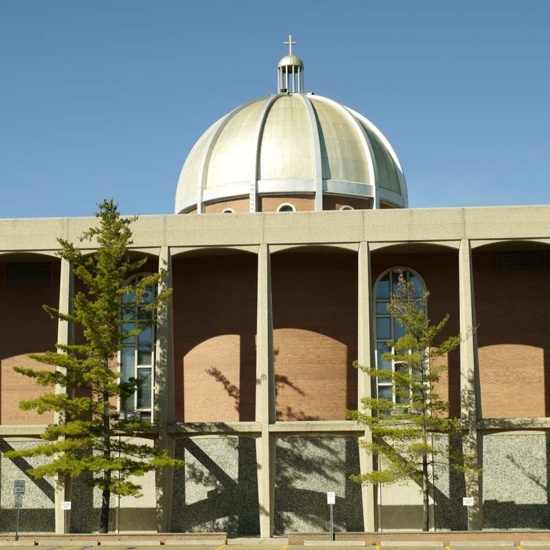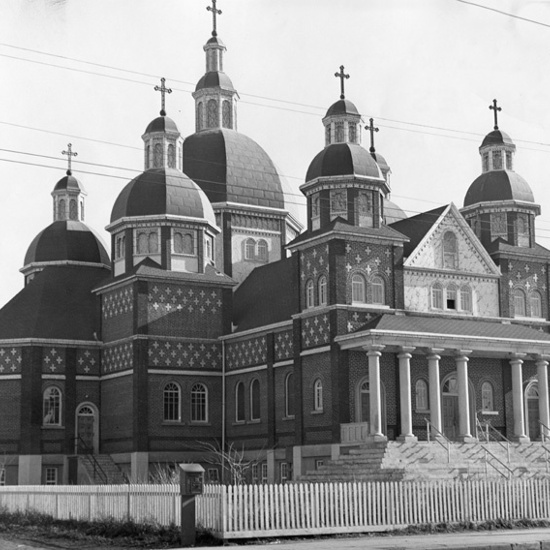Byzantine
Byzantine architecture is an important reminder of the Eastern European settlers who arrived in Edmonton beginning in the 1890s.
Byzantine architecture is an important reminder of the Eastern European settlers who arrived in Edmonton beginning in the 1890s.
Ukrainians began arriving in Edmonton in the 1890s, and many homesteaded north of the city. These new immigrants required clergy familiar with their language, culture, and liturgy, and in 1902, the Ukrainian Basilian Fathers arrived to tend to their needs. They represented some of the earliest Ukrainian Catholic missionaries in western Canada. With a large and devoted flock, substantial and important churches were built in the Byzantine style, which was originally influenced by Roman, Jewish, and Syrian architecture. As a result, Edmonton’s Ukrainian churches have an architectural lineage dating back thousands of years.
Characteristics
- Nine-part cross-shaped plan with apse oriented to the east
- Central main dome open on the interior, often accompanied by smaller closed domes
- Brick construction or veneer
- Decorative pilasters and stringcourses
- Central, triangular pediment on front facade
- Long, wide entry staircase
- Painted wall frescoes on the interior
Details
Structures
St. Barbara's Russian Orthodox Cathedral
St. Basil the Great Ukrainian Catholic Church
St. Josaphat Ukrainian Catholic Cathedral
Architects
Time Periods
Neighbourhoods
Character Defining Elements
Bell tower, Brick cladding, Brick structure, Columns, Concrete block structure, Cruciform plan, Cupola, Dome, Flat roof, Half storey, Intersecting gable roof, Latin cross, Orthodox cross, Pediment, Pier or Pillar, Pilaster, Porch, Portico, Precast concrete structure, Rectangular footprint, Stained glass, String course, Terrazzo, Three storeys or more


